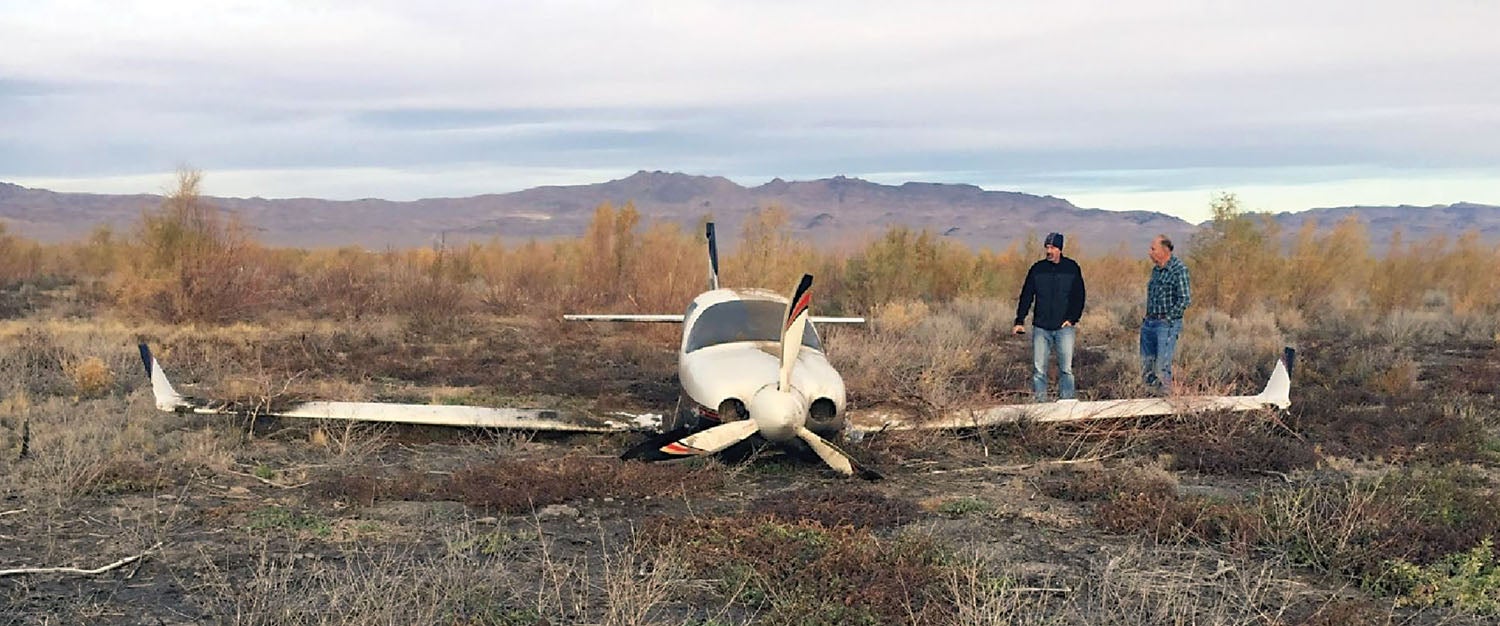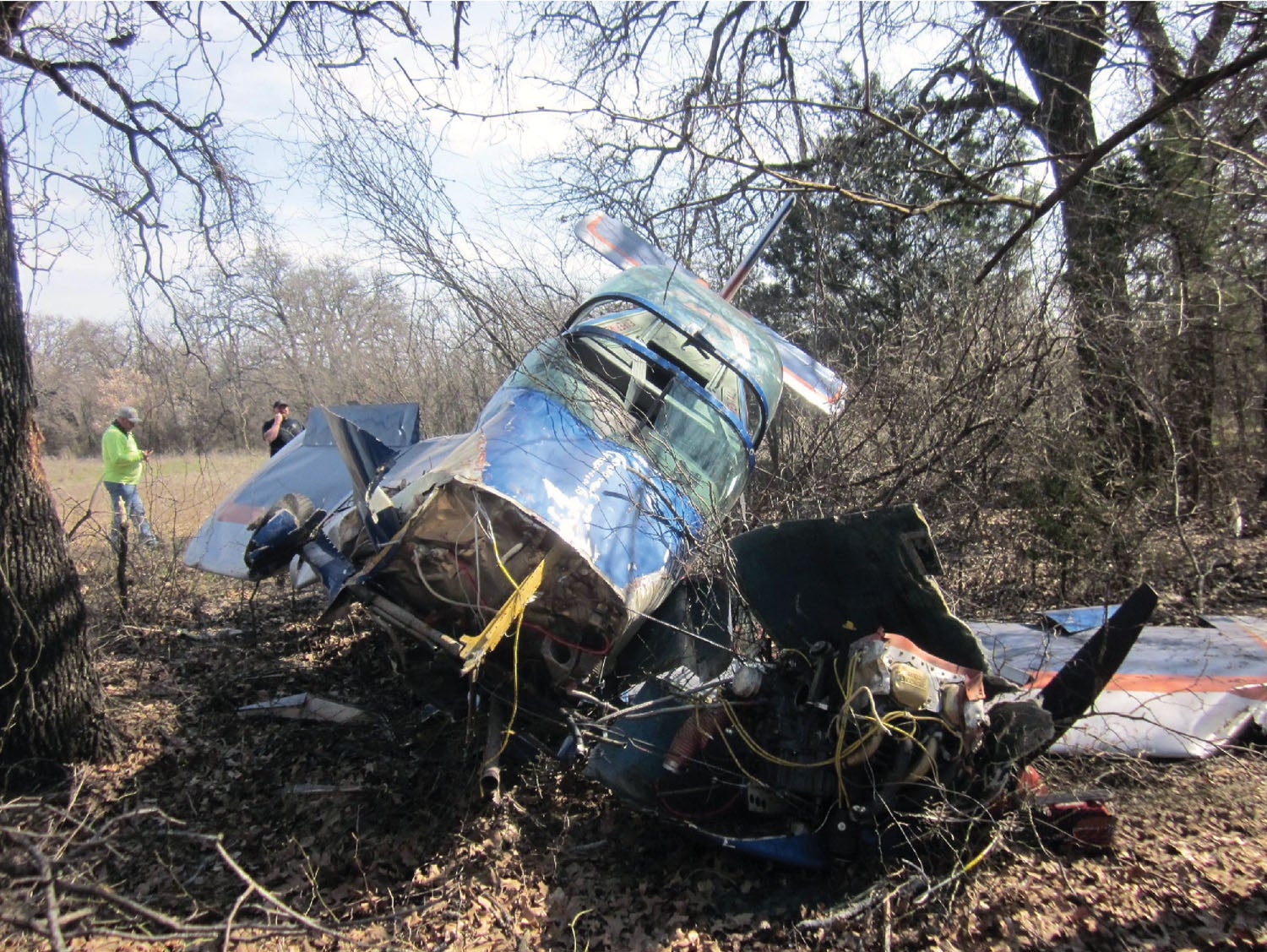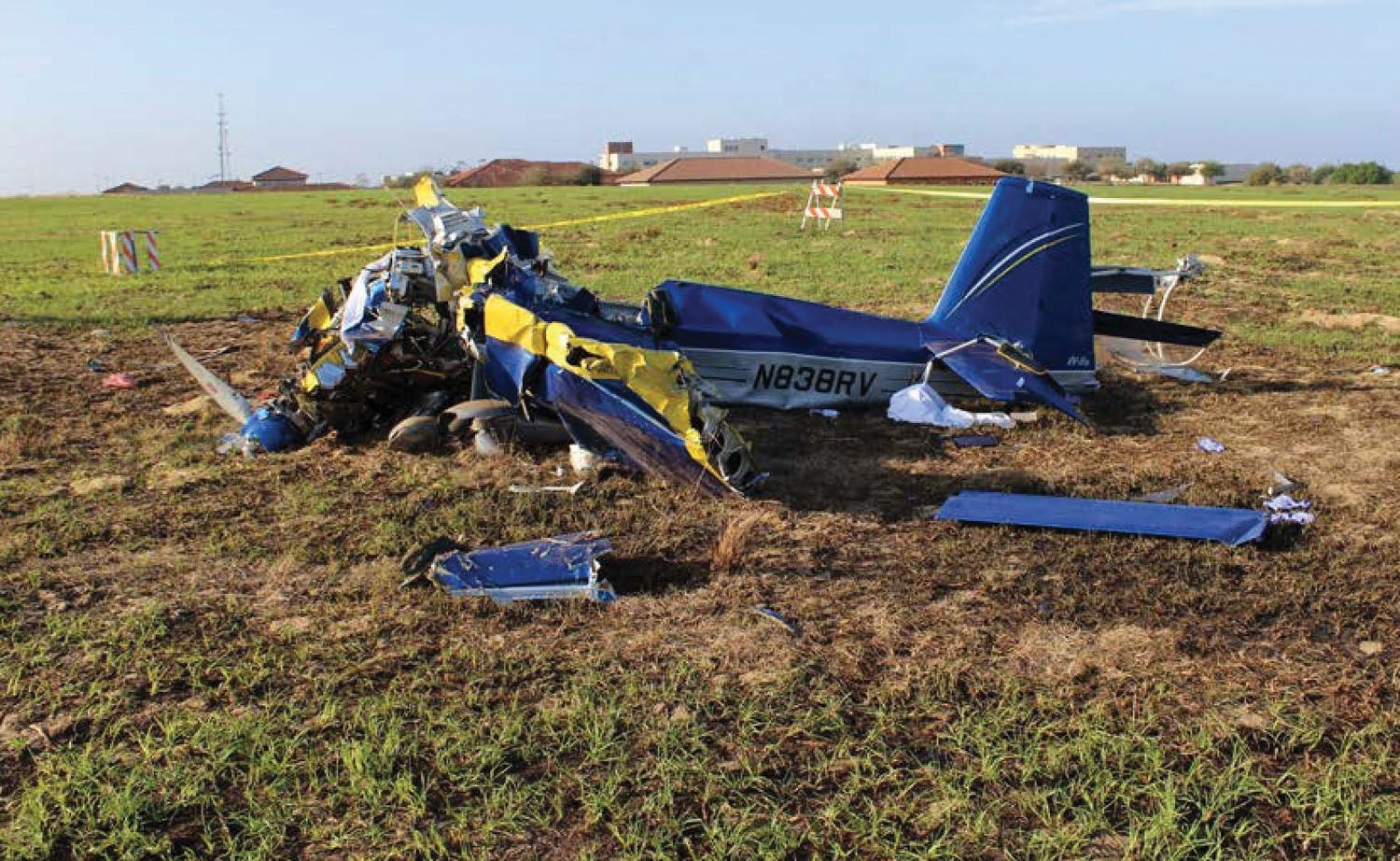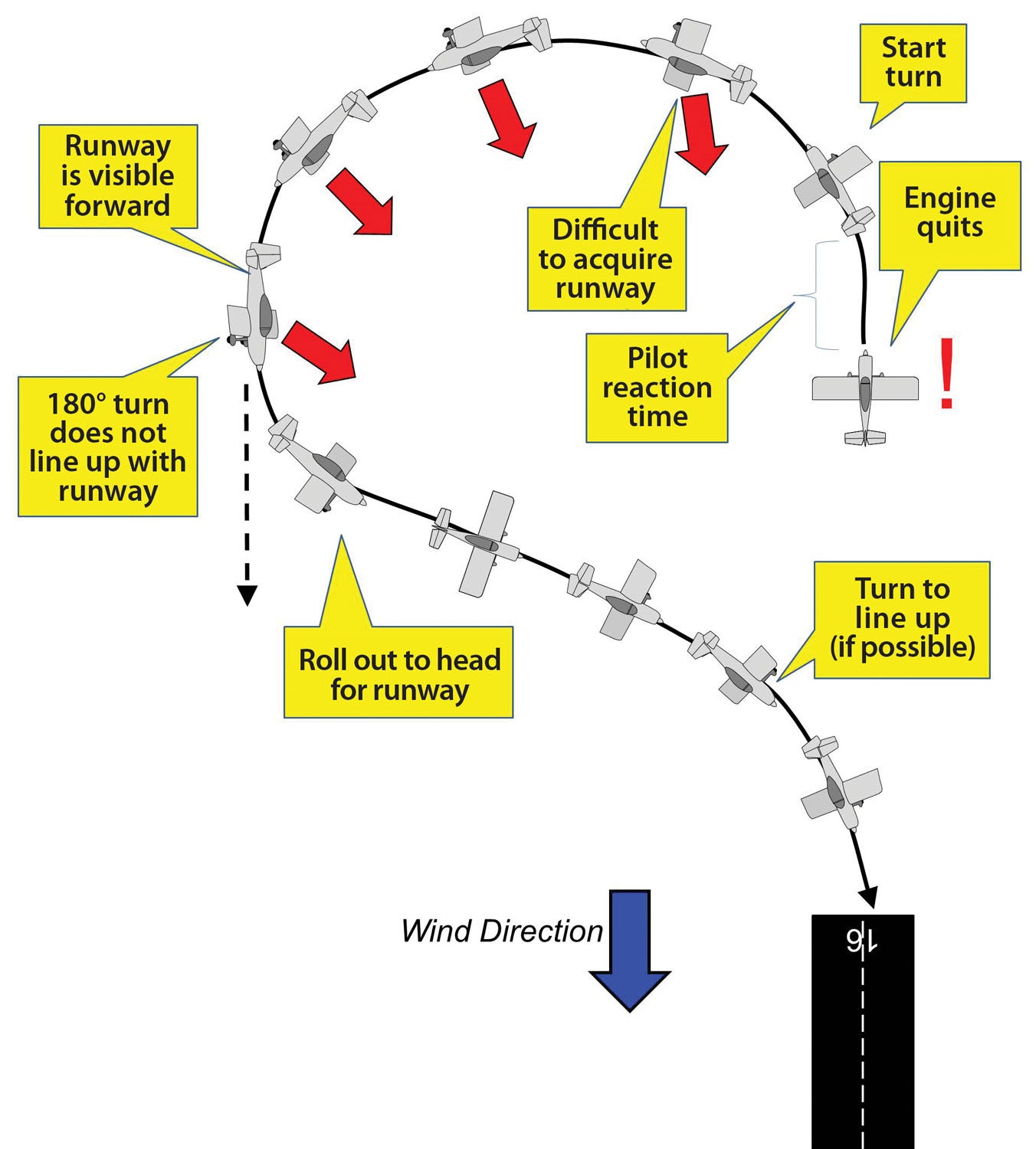
Loss of engine power is every pilot’s nightmare. Options can become vanishingly small when the prop stops turning and the pilot has mere seconds to stave off damage, injury or death.
The risk is greater in the Experimental/Amateur-Built world. About 31% of all homebuilt accidents begin with a loss of engine power versus about 15% of Cessna 172 accidents.
We looked at why engines quit in “When the Prop Stops” in the August 2017 issue of KITPLANES®. Let’s examine how pilot reactions after the failure can affect the outcome.
Where Did It Quit?
OK, the prop has rattled to a stop. Where are you?
As Figure 1 illustrates, the odds are, you were in the pattern. About 36% of engine failures occur during the initial climb after takeoff. Obviously, the engine is expected to produce full power and it’s under the most strain. It’s also a relatively short time period.

In addition, half of the fuel starvation cases and 70% of the fuel contamination cases also manifest during the initial climb. Fuel starvation is when the aircraft has fuel, but the pilot has not configured the fuel system correctly to provide it to the engine.
Roughly 11% of engine failures happen during the downwind, base or final portions of the approach. Mechanical failures in these periods are relatively rare, just 16% of the known mechanical issues. Many of us were taught to not stray out of gliding range to the runway when in the pattern, but sometimes you just have to follow the Cessnas flying jumbo-jet patterns.

Slightly less than half of all engine-failure cases occur outside the airport area, usually at a decent altitude. This shouldn’t be a surprise for several reasons. Many airplanes spend more time at cruise (or goofing around locally) than they spend in the pattern, so the exposure is much greater. Also, over 75% of all fuel exhaustion cases occur away from the airport.

Picking a Spot
After the engine quits, one’s next task is to pick a location to land the plane. It doesn’t take much book learnin’ to know that landing in a pasture is safer than taking the plane into trees. Figure 2 shows the terrain that dead-stick homebuilt pilots chose for their emergency landings. It looks only at cases where the NTSB does not report a stall. (Obviously, a stall removes most of the ability to pick a landing spot.)
Thirty percent are listed as pastures or open fields—usually a pilot’s first choice if a runway can’t be reached. Often it allows a damage-free landing, but sometimes rocks or plowed dirt affect the landing. The pilot of a high-performance homebuilt may even opt to land gear up if the ground looks soft.

Probably of more interest is the survivability in performing the forced landing in worse terrain. Given a choice, what should you stay away from?
Again, we’ll examine forced landings where a stall did not occur. A quarter of the cases where buildings were involved resulted in fatalities. Power poles/lines were number two, with about a 20% fatality rate. Number three in the fatality hit parade were trees, though hitting branches is different than hitting trunks.

Roads, even if the plane slides off into ditch or strikes signs, are pretty good—only two of 50 forced landings onto roads resulted in a fatality. That’s just 4%, which is, in fact, slightly better than open fields/pastures (146 total).
Remember, again, the NTSB’s reportability threshold. While 30% of forced landing accidents happened in open fields or pastures, there’s no record of how many engine failures ended with no damage.

Keeping It Flying
If airspeed is maintained, the pilot has some ability to select where the plane ends up. If airspeed isn’t kept above stall…well, a 60˚ uncontrolled descent into flat ground is less survivable than a 60-mph dead-stick glide into a tree. A gliding descent into bad terrain may have a bad result, but stalling and spinning-in is much more hazardous.
How much more hazardous? Our worst-case fatality rate for stall-free forced landings (buildings) was about 25%. But when one looks at engine-failure cases where the pilot stalled, 61% were fatal. Try to stretch the glide too far, and it’s a coin flip as to whether you’ll live through it.

Remember, too, that if the engine dies on initial climb (where it’s most likely to stop!), you’re already slow—at climb speed. About 17% of the accidents stemming from losing power on the initial climb feature the pilot getting too slow and stalling out. Maybe they were trying to stretch the glide, or maybe they just froze up.
Which brings us to the “impossible turn”: turning back during the initial climb to land downwind on the same runway. It’s certainly possible; I personally witnessed a successful execution a few years back. The ability to pull off the maneuver depends on a lot of factors, including the actual position and altitude at the time of loss of power, the glide performance of the aircraft, how quickly the pilot reacts, the visibility out of the aircraft, the wind, and the pilot’s ability to maintain airspeed during a complex maneuver at low altitude, toward a runway that’s behind them.
Of the reported accidents involving loss of power during initial climb, about 8% happened to pilots attempting the “impossible turn.” Of course, we don’t know how many times the turn was successful—because the incident probably didn’t end up in the NTSB accident database.

Wrap-Up
The fatality rate after an engine failure is actually less than other types of accidents. We receive intensive instruction on what to do after a loss of power during our student training, and the CFIs always pull the power during our biennial flight reviews. The CFIs usually pull the throttle with a good landing field in sight, though. You can’t count on that for the real thing.
The key point: Maintain control of the aircraft.
Sure, it’ll be hard. There likely will be some horrendous bangs and rattles, possibly accompanied by smoke. You may have panicking passengers. Maybe you can reach that smooth patch of open ground if you can stretch the glide. Then everything will be OK—no one hurt, the airplane undamaged, the FAA not coming down on you. Just a wee more back pressure…
Maybe. Maybe not. But if you judge wrongly and stall, there’s a 60% chance that you and your passengers are going to die. On the other hand, where homebuilt pilots have maintained control and glided into trees, only 18% of the cases resulted in fatalities.
So please: If the engine quits, above all else, keep control of the aircraft.
Photos and illustrations: Ron Wanttaja.














So much safer out west, with the abundance of clear fields to set down on in the event of engine failure. And much of the land is fairly flat, unless over the rockies. In the east it seems like one dense forest after another with small clearings that are iffy to set down in. Or it’s covered with buildings, houses and roads. Of course if flying right over a large city out west, it’s not so safe either.
A concern relative to this topic is many pilots fail to use the opportunity to practice a power-off landing each time they return to the airport. Long, extended finals are not only failing to use this, but they increase the chance of failing to reach the runway.
Was taught in the far-off days of yore that while in the pattern, to never get further from the airport than one could glide in the event of a failed engine. Nowadays, though, the FAA stresses stabilized approaches, gradual power reductions, etc. Good for training future airline pilots, not so good for Cessnas ending up in the drive-through line at the Burger King just off the field after the engine quits.
Then again…modern engines ARE probably that reliable that it may actually come out safer in the end.
When able, I fly tight patterns in my Fly Baby, because if the engine quits, I haven’t got much glide. Throw out a brick and fly formation with it, is about all I can do. Still, lots of students at my home field, so I end of flying wiiiiiiiddddeeee patterns.
If you do not have a nice field to try to land in, do not fear the trees. Here in New England there are more trees than open fields and I personally know a number of pilots who made successful tree landings. Fly minimum sink, don’t attempt to flare, and keep kicking the rudder to avoid the tree trunks until the expensive noises stop. Really. Day or night. Trees are soft. There is even a video on youtube of a tree catching a Cessna and as gently as you could ask putting the airplane down in a parking lot. Search on “Small plane crashes into tree, flips and slams down in parking lot”.
Best of luck.
Good food for thought. I have a quibble, though, with putting the Rotax 4-stroke engines in the “non certified” bin. They are most definitely available as certified engines (e.g Rotax 912 vs 912UL) although most sold are probably the non-certified versions. (Lycoming and Continental also sells non-certified versions of their engines, so if we put the Rotax there, we should also put those in the “non certified” bin.)
That’s a good point. It’s hard to tell from the NTSB report information, whether the engine itself is a certified model of Rotax 912, since the suffixes aren’t always included in the accident records for the engine. Just like sometimes the report just says “Rotax” with no other information
Going to need to change the category label, from “Non-Certified Four Strokes” to something like “Non-Traditional Four Strokes.”